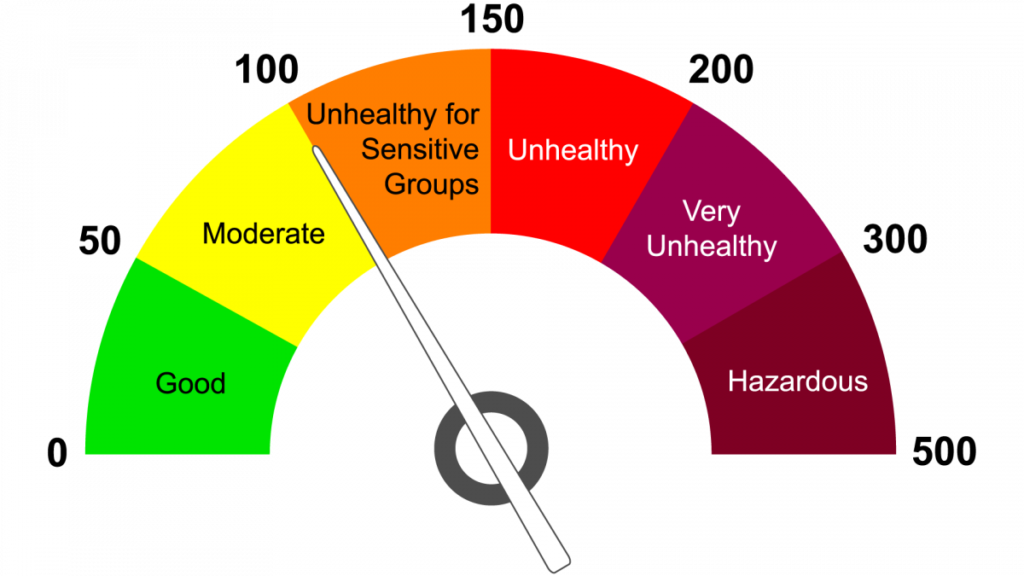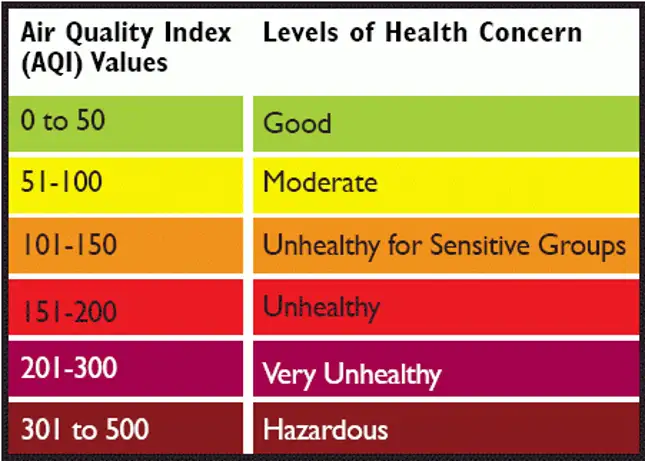Understanding the Air Quality Index (AQI) and How It Works
Air quality has become a critical concern globally, with the Air Quality Index (AQI) playing a pivotal role in assessing and communicating the severity of air pollution levels. Understanding AQI is essential for various competitive exams, from civil services to banking and defense, as it pertains to environmental policies, health impacts, and sustainable development.
What is the Air Quality Index (AQI)?
The Air Quality Index (AQI) is a standardized metric used to gauge the quality of the air we breathe. It measures pollutants such as particulate matter (PM2.5 and PM10), ozone (O3), nitrogen dioxide (NO2), sulfur dioxide (SO2), and carbon monoxide (CO) present in the air.
How AQI Works
The AQI categorizes air quality into different ranges: Good, Moderate, Unhealthy for Sensitive Groups, Unhealthy, Very Unhealthy, and Hazardous. Each range corresponds to a color code and a health advisory, providing clear guidance on precautions to be taken.
Importance of AQI for Public Health
Understanding AQI is crucial as poor air quality can lead to respiratory problems, cardiovascular diseases, and exacerbate existing health conditions. Governments use AQI to implement policies like emission controls and public health advisories to protect citizens.
Role of AQI in Policy Making
Governments and international organizations rely on AQI to set air quality standards and formulate environmental regulations. It influences policymaking in sectors such as transportation, industry, and urban planning to mitigate air pollution.
Conclusion
In conclusion, mastering the concept of AQI is vital for aspirants preparing for competitive exams, ensuring a comprehensive understanding of environmental governance, public health impacts, and sustainable development practices.

Why this News is Important
Understanding AQI’s Impact on Public Health
Air quality affects millions globally, with AQI serving as a critical tool for assessing and addressing pollution levels. For exam candidates, grasping AQI enhances knowledge of environmental policies and health impacts, crucial in competitive exams.
AQI’s Role in Policy and Governance
AQI guides governments in formulating effective policies to combat air pollution, making it pivotal in civil services and administrative exams. Familiarity with AQI aids in understanding regulatory frameworks and sustainable development goals.
Historical Context
Evolution of AQI Standards
The concept of AQI emerged from the need to quantify air quality comprehensively. Originating in the United States in the 1970s, AQI has since evolved into a global standard adopted by countries worldwide to monitor and regulate air pollution levels.
Key Takeaways from “Understanding the Air Quality Index (AQI) and How It Works”
| Serial Number | Key Takeaway |
|---|---|
| 1. | AQI measures various pollutants such as PM2.5, PM10, ozone, nitrogen dioxide, sulfur dioxide, and carbon monoxide. |
| 2. | AQI categorizes air quality into six levels, each corresponding to specific health implications and precautionary measures. |
| 3. | Understanding AQI is crucial for policymaking in sectors like transportation, industry, and urban planning to mitigate air pollution. |
| 4. | AQI standards originated in the 1970s and have since become a global metric for assessing and regulating air quality. |
| 5. | Aspirants preparing for competitive exams benefit from AQI knowledge due to its relevance in environmental governance and public health policies. |
Important FAQs for Students from this News
1. What is PM2.5 and PM10 in the context of AQI?
- PM2.5 and PM10 refer to particulate matter with diameters of 2.5 micrometers and 10 micrometers, respectively. They are key pollutants measured by AQI due to their impact on respiratory health.
2. How does AQI categorize air quality?
- AQI categorizes air quality into six levels: Good, Moderate, Unhealthy for Sensitive Groups, Unhealthy, Very Unhealthy, and Hazardous, each associated with specific health risks.
3. Why is AQI important for competitive exams?
- AQI knowledge is crucial for exams as it relates to environmental policies, public health impacts, and sustainable development goals, which are frequently tested topics.
4. What are the health impacts of poor AQI levels?
- Poor AQI levels can lead to respiratory issues, cardiovascular problems, and exacerbate conditions like asthma, making AQI monitoring essential for public health management.
5. How can AQI influence government policies?
- AQI data guides governments in formulating regulations on emissions, urban planning, and industrial practices to improve air quality and protect public health.
Some Important Current Affairs Links


















 Exciting News!
Exciting News!  Join Our Telegram Channel Now!
Join Our Telegram Channel Now!
 Join our Telegram channel for a thrilling adventure into the world of daily current affairs.
Join our Telegram channel for a thrilling adventure into the world of daily current affairs. 
 Don’t miss out on the latest updates and insights! Click to join now and be part of the knowledge revolution!
Don’t miss out on the latest updates and insights! Click to join now and be part of the knowledge revolution! 
